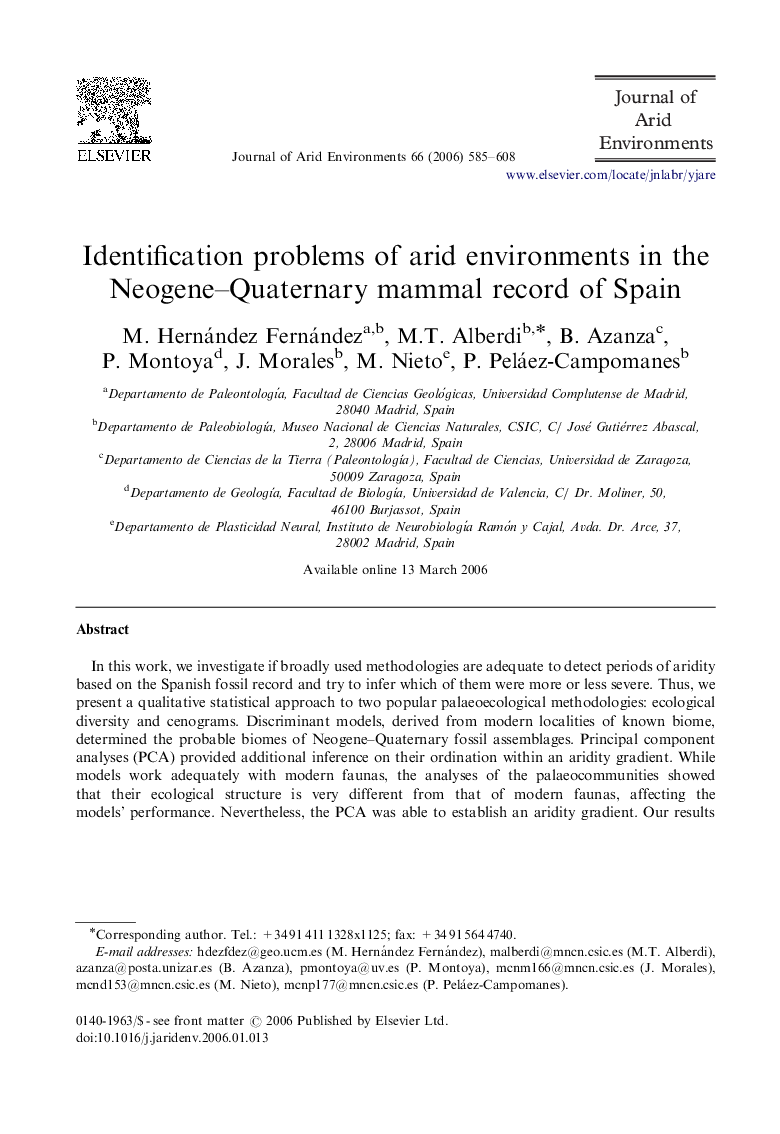| Article ID | Journal | Published Year | Pages | File Type |
|---|---|---|---|---|
| 4394567 | Journal of Arid Environments | 2006 | 24 Pages |
In this work, we investigate if broadly used methodologies are adequate to detect periods of aridity based on the Spanish fossil record and try to infer which of them were more or less severe. Thus, we present a qualitative statistical approach to two popular palaeoecological methodologies: ecological diversity and cenograms. Discriminant models, derived from modern localities of known biome, determined the probable biomes of Neogene–Quaternary fossil assemblages. Principal component analyses (PCA) provided additional inference on their ordination within an aridity gradient. While models work adequately with modern faunas, the analyses of the palaeocommunities showed that their ecological structure is very different from that of modern faunas, affecting the models’ performance. Nevertheless, the PCA was able to establish an aridity gradient. Our results suggest that independent tools of palaeoecological analysis are critical when reconstructing palaeoenvironments.
